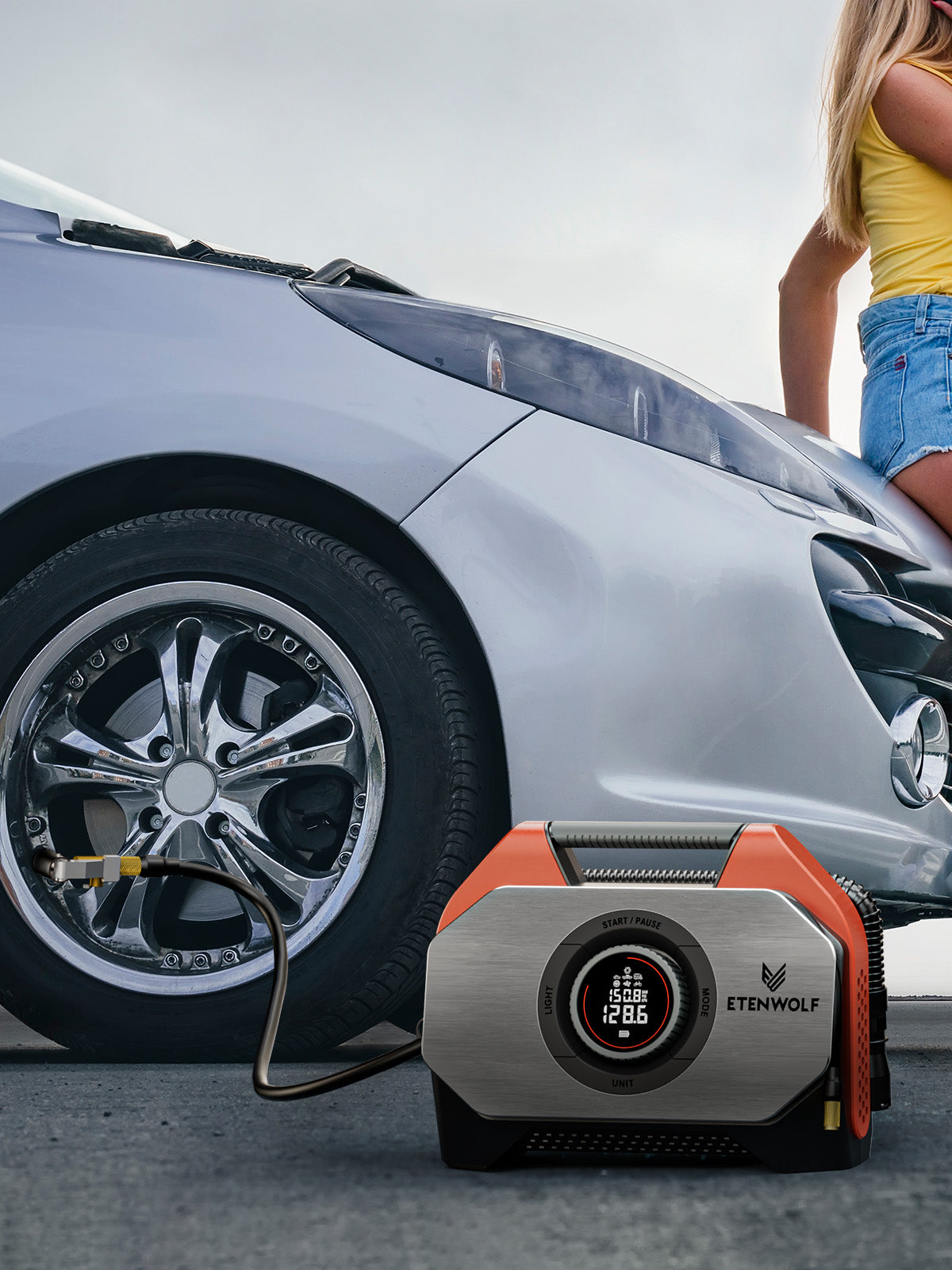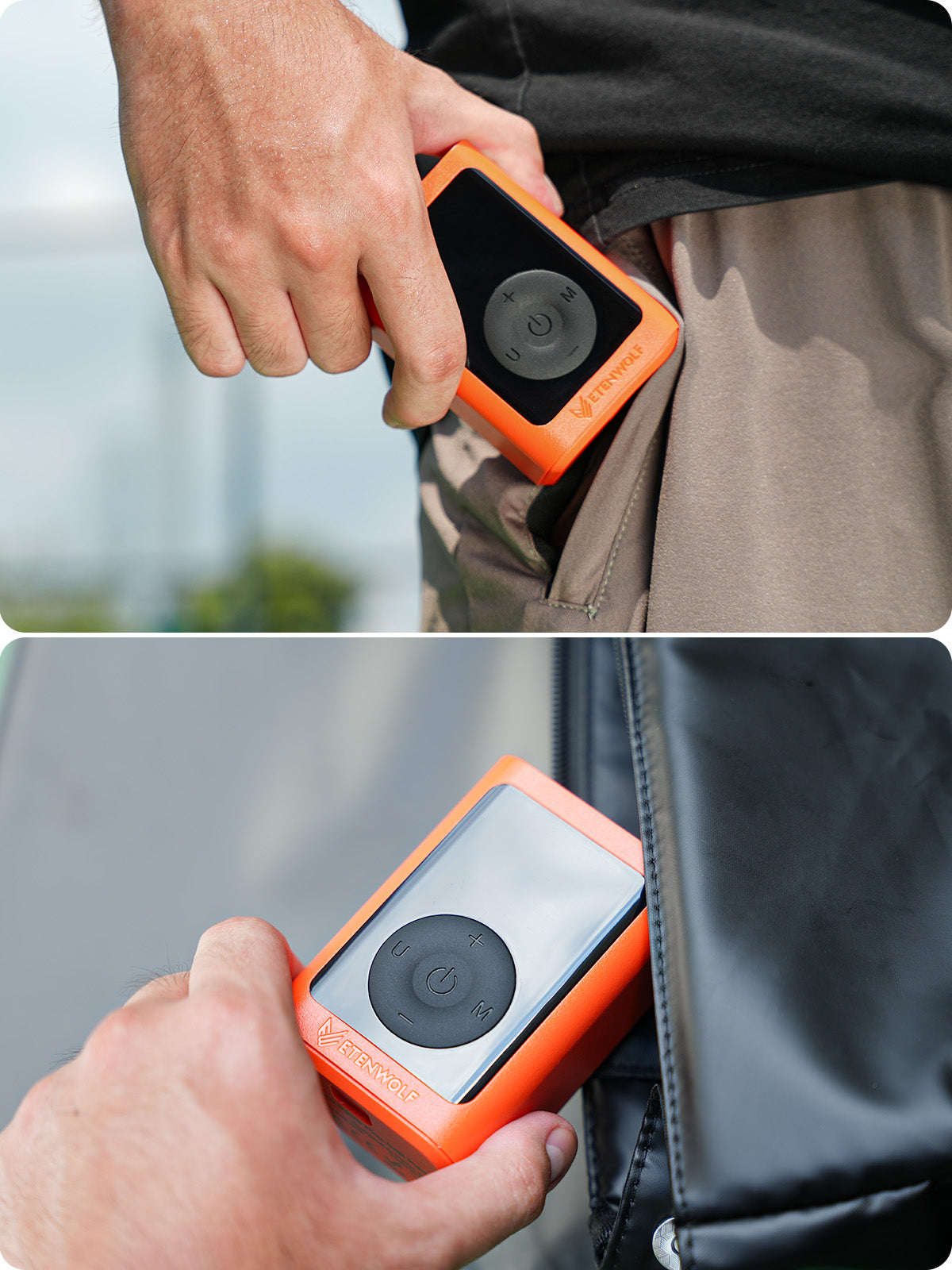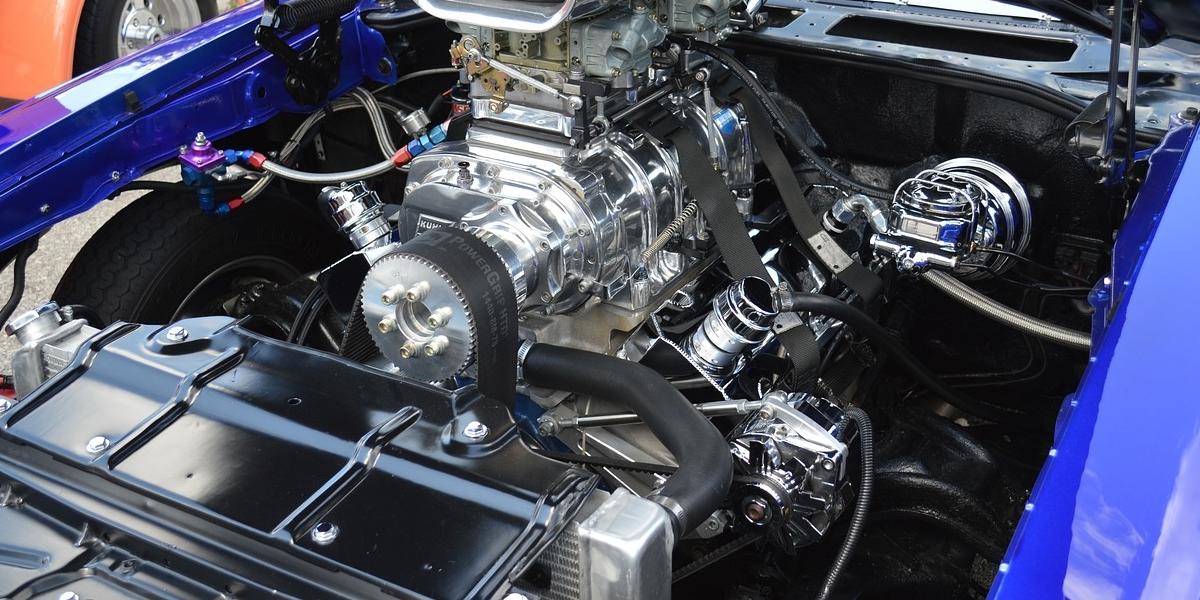I. Introduction – The Engine Is the Heart, but Tires Are the Feet
When drivers praise a high-speed car for its punchy acceleration or smooth handling, they’re often marveling at the power under the hood—namely, the car engine. That engine horsepowers your ride forward, dictating how fast you can go and how swiftly you can respond. But even the most powerful engine can’t perform well if the tires can't grip the road. Enter the unsung hero of automotive performance: tire pressure.
This article explores:
· How a car engine works and the significance of engine horsepower,
· Why tire pressure influences speed, safety, and efficiency,
· How high-performance drivers keep tires in top shape—especially using the ETENWOLF Vortex S7, our pick for the best cordless tire inflator 2025—without compromising power or convenience.
II. A Brief History & Evolution of the Car Engine
The modern car engine owes its existence to Karl Benz, who built the first gasoline-powered automobile in 1885. Since then, engine design has evolved from single-cylinder marvels to high-tech V8s, turbocharged systems, and hybrid-electric engines.

· Early internal combustion engines (ICEs) relied on simple carburation and air cooling.
· The introduction of turbocharging improved horsepower dramatically without increasing engine size—a breakthrough in forced induction.
· In the 21st century, hybrid engines add electric torque to reduce fuel consumption while retaining performance—proof that the heart of performance isn’t just fuel, but innovation.
· Most recently, pure electric powertrains have come to dominate in drag-strip performance and consumer EVs alike for instantaneous torque delivery.
Authority data from the International Energy Agency’s Global EV Outlook 2023 shows electric vehicles reaching record sales, highlighting the ongoing evolution of the engine away from gasoline. (IEA Global EV Outlook 2023)
III. How a Car Engine Works – The Four-Stroke Cycle
At the core, most internal combustion engines operate on the four-stroke cycle:
· Intake Stroke – Air-fuel mixture is drawn in.
· Compression Stroke – The mixture is compressed, increasing energy potential.
· Combustion Stroke – Spark ignition causes an explosion that pushes the piston down.
· Exhaust Stroke – Spent gases are expelled from the cylinder.
This cycle occurs multiple times per second across multiple cylinders, generating rotational power that goes through the transmission, reaching your wheels.
Electric motors, by contrast, bypass mechanical strokes with magnetic fields to produce immediate torque.
What matters for drivers is engine horsepower—a measurement of work over time. Higher horsepower enables quicker acceleration and higher top speeds. A 2025 performance benchmark comes from Car and Driver’s 1,000-Horsepower EV Tests, demonstrating how peak torque and horsepower directly affect sprint times and cornering. (Car and Driver EV Tests)
IV. Why a High-Horsepower Engine Needs Perfect Tires
Even with massive engine horsepower, speed and control are meaningless if tires can’t transfer that power to the road.
· Low tire pressure causes increased rolling resistance. According to the U.S. Department of Energy, losing just 1 PSI can reduce fuel efficiency by up to 0.2%. This inefficiency matters even more when extracting peak performance from a powerful engine.
· Overinflated tires reduce contact patch, compromise grip, and decrease braking performance. The Insurance Institute for Highway Safety (IIHS) emphasizes proper tire pressure for crash avoidance.
· Ideal tire pressure preserves ride comfort, responsiveness, and optimal tire wear—essential for high-horsepower vehicles.
· Imagine merging at high speed with uneven or low tire pressure… The engine might deliver, but lack of grip can lead to loss of control.
V. The Science of Tire Pressure & Engine Performance
Performance depends on the synergy between engine output and tire mechanics:
· Underinflated Tires: Increased wall flex, heat accumulation, and risk of blowouts—especially catastrophic on race or highway speeds.
· Overinflated Tires: Less grip, rougher ride, and reduced braking effectiveness.
· Correct Pressure: Ensures optimal footprint shape, traction, and even wear.
The NHTSA reports that over 11,000 vehicle crashes yearly result from tire-related issues, with underinflation being the most common culprit. (NHTSA Tire-Related Crash Data)
Bridgestone research confirms that optimal tire inflation can improve braking distance by up to 20%.
High-performance engines without proper tire support may offer speed, but not safety or efficiency.
VI. Checking Tire Pressure: Best Practices
How often should drivers check tire pressure?
· Every month and before long drives, as recommended by NHTSA.
· Temperature fluctuations: A 10°F drop can lower PSI by ~1.5. Frequent monitoring is key.
· Tools: Analog gauges (inexpensive but less precise), TPMS (built into many cars), and digital cordless pumps (most accurate and portable).
Proper methodology:
· Check pressure when tires are cold (haven’t driven for at least 3 hours).
· Compare with vehicle’s recommended PSI (door sticker or manual—not the tire’s max PSI).
· Inflate to the recommended range using precision tools.
In high-performance driving, maintaining set and precise tire pressures is critical for lap consistency, braking distances, and vehicle dynamics.
VII. Why the ETENWOLF Vortex S7 Is the Ultimate Tire Companion
Meet the ETENWOLF Vortex S7 Heavy Duty Tire Inflator Air Compressor—designed for high-performance vehicle owners who demand reliability, speed, and accuracy.
Key Reasons It's 2025's Best Cordless Tire Inflator:
· Massive 38,400 mAh Battery (~142 Wh)
This sets a new standard in portable inflators: more energy than many laptops, meaning multiple full SUV or truck tire inflations on a single charge.
· 260W Dual-Motor System
Delivers high airflow and pressure rapidly: a 30” SUV tire can be filled from flat to road-ready PSI in about 30 seconds—saving precious time during pre-drive checks or emergencies.
· 160 PSI Max with ±1 PSI Accuracy & Auto Shutoff
Precision is critical for performance vehicles. Overinflation or underinflation by just a few PSI can degrade handling or risk blowouts. The auto-stop prevents guesswork.
· Active Cooling System & High Duty Cycle
Many inflators reduce power or shut off when overheated. The S7’s active cooling keeps it running reliably even under continuous heavy use—ideal for auto shops or fleet prep.
· Built-In 1000-Lumen LED with SOS Mode
For night-time tire changes or roadside emergencies, this powerful light also has an SOS flash mode, adding safety in crisis.
· USB-C Fast-Charging Power Bank
Doubles as a phone charger or device power supply—critical when stranded or in remote areas.
· Compact, Rugged Build
Despite its power, the S7 remains portable enough to fit in saddlebags, trunks, or glove compartments—making it practical for performance drivers and sports car enthusiasts alike.

VIII. Scenario Example: High-Performance Track Day
Imagine you’re on a track day with a high-horsepower car like a Mustang GT or a BMW M3—engine horsepower is high, you’ve just finished several hot laps, and tires are hot. You pull in, check tire pressures: front left is 4 PSI low. You need a fast, accurate pump.
A standard cordless inflator (2,600–7,800 mAh, 120 PSI) might struggle—slow fill, heat fatigue.
The ETENWOLF Vortex S7:
· Starts instantly with its big battery,
· Fires up dual motors to refill in seconds,
· Stops exactly at your perfect PSI,
· Never overheats,
· Lights your workspace with 1000 lumens,
· and keeps your phone alive via USB-C as you race again.
That’s performance-focused engineering in every sense.
IX. Conclusion – Power, Control, Safety Interwoven
Owning a high-performance engine is exhilarating, but raw power must be paired with precision control. Tire pressure may seem mundane, but it defines grip, safety, fuel economy, and the engine’s ability to transmit its power effectively.
For serious drivers, the ETENWOLF Vortex S7 shines as 2025’s best cordless tire inflator. Its unmatched battery capacity, race-level power, precision PSI accuracy, and emergency-ready features make it the logical choice for anyone whose car demands more.
Remember: Engines may win races, but tires hold the road—and keeping them properly inflated ensures that your horsepower doesn’t go to waste.







Leave a comment
All comments are moderated before being published.
This site is protected by hCaptcha and the hCaptcha Privacy Policy and Terms of Service apply.